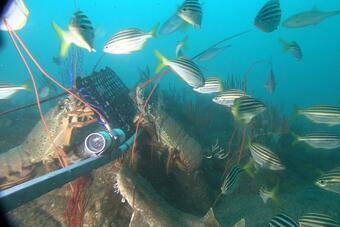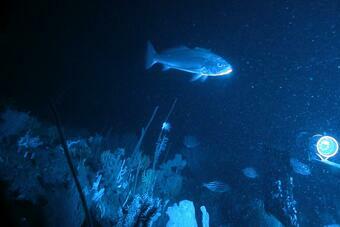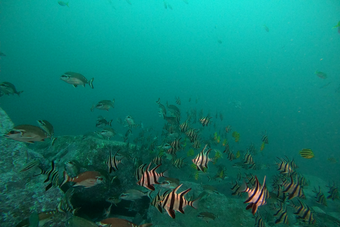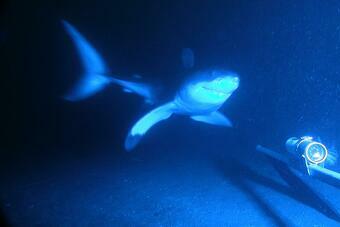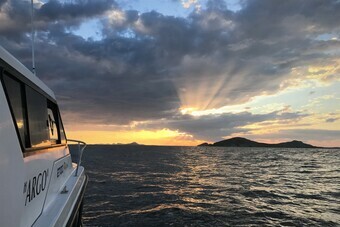Publications:
Williams et al. 2019
The spatial distribution of a species assemblage is often determined by habitat and climate. In the marine environment, depth can become an important factor as declining light and water temperature leads to changes in the biological habitat structure. To date, much of the focus of ecological fish research has been based on reefs in less than 40 m with little research on the ecological role of mesophotic reefs. We deployed baited remote underwater stereo video systems (stereo-BRUVS) on temperate reefs in two depth categories: shallow (20–40 m) and mesophotic (80–120 m), off Port Stephens, Australia. Sites were selected using data collected by swath acoustic sounder to ensure stereo-BRUVS were deployed on reef. The sounder also provided rugosity, slope and relief data for each stereo-BRUVS deployment. Multivariate analysis indicates that there are significant differences in the fish assemblages between shallow and mesophotic reefs, primarily driven by Ophthalmolepis lineolatus and Notolabrus gymnogenis only occurring on shallow reefs and schooling species of fish that were unique to each depth category: Atypichthys strigatus on shallow reefs and Centroberyx affinis on mesophotic reefs. While shallow reefs had a greater species richness and abundance of fish when compared to mesophotic reefs, mesophotic reefs hosted the same species richness of fishery-targeted species. Chrysophrys auratus and Nemodactylus douglassii are two highly targeted species in this region. While C. auratus was numerically more abundant on shallow reefs, mesophotic reefs provide habitat for larger fish. In comparison, N. douglassii were evenly distributed across all sites sampled. Generalized linear models revealed that depth and habitat type provided the most parsimonious model for predicting the distribution of C. auratus, while habitat type alone best predicted the distribution of N. douglassii. These results demonstrate the importance of mesophotic reefs to fishery-targeted species and therefore have implications for informing the management of these fishery resources on shelf rocky reefs.
20- 120 m
Mesophotic “mentions”
83 x (total of 6552 words)
Classification
* Presents original data
* Focused on 'mesophotic' depth range
* Focused on 'temperate mesophotic ecosystem'
Fields
Behavior
Biodiversity
Community structure
Ecology
Fisheries
Focusgroups
Fishes
Locations
Australia - Southeastern Australia
Platforms
Baited Remote Underwater Video (BRUV)



